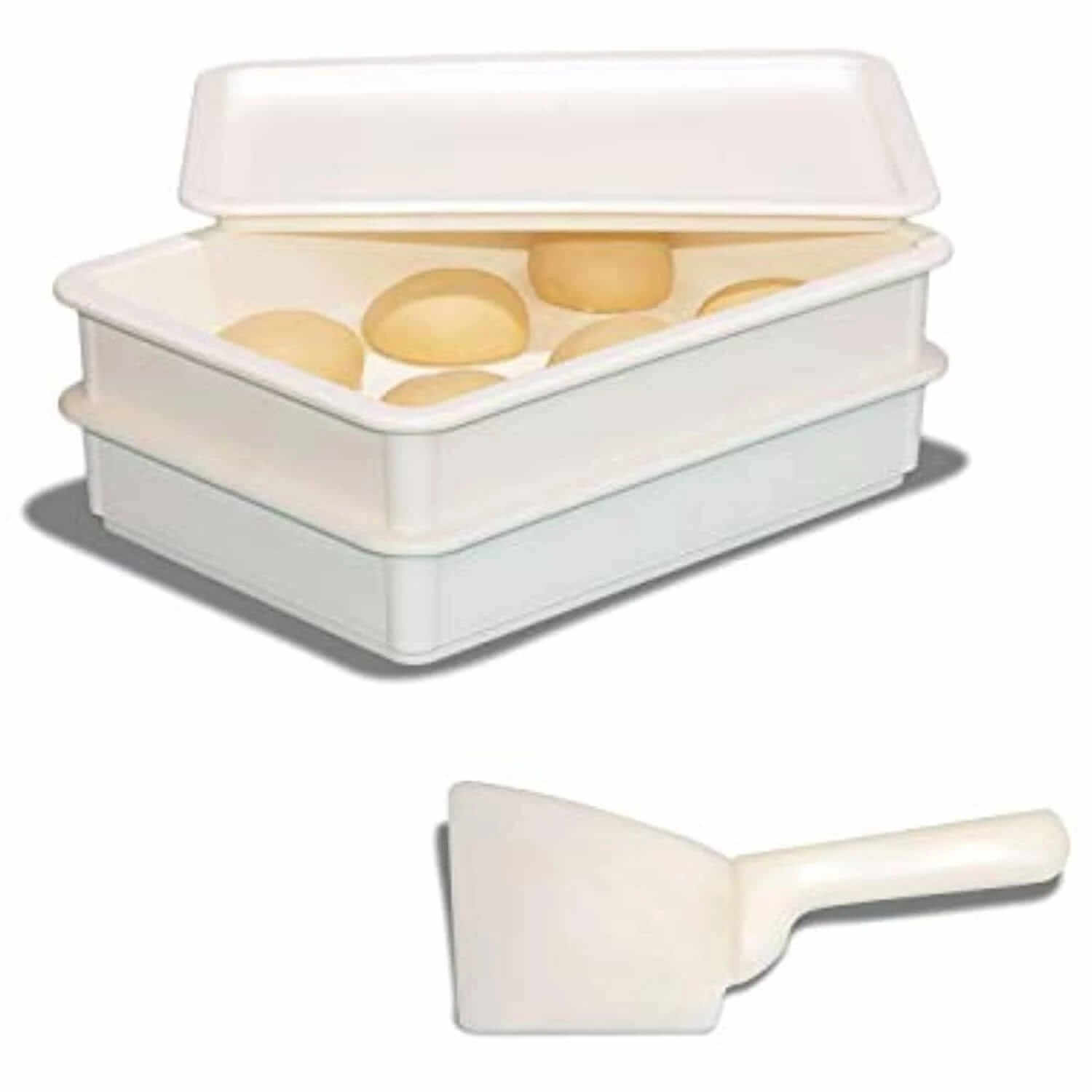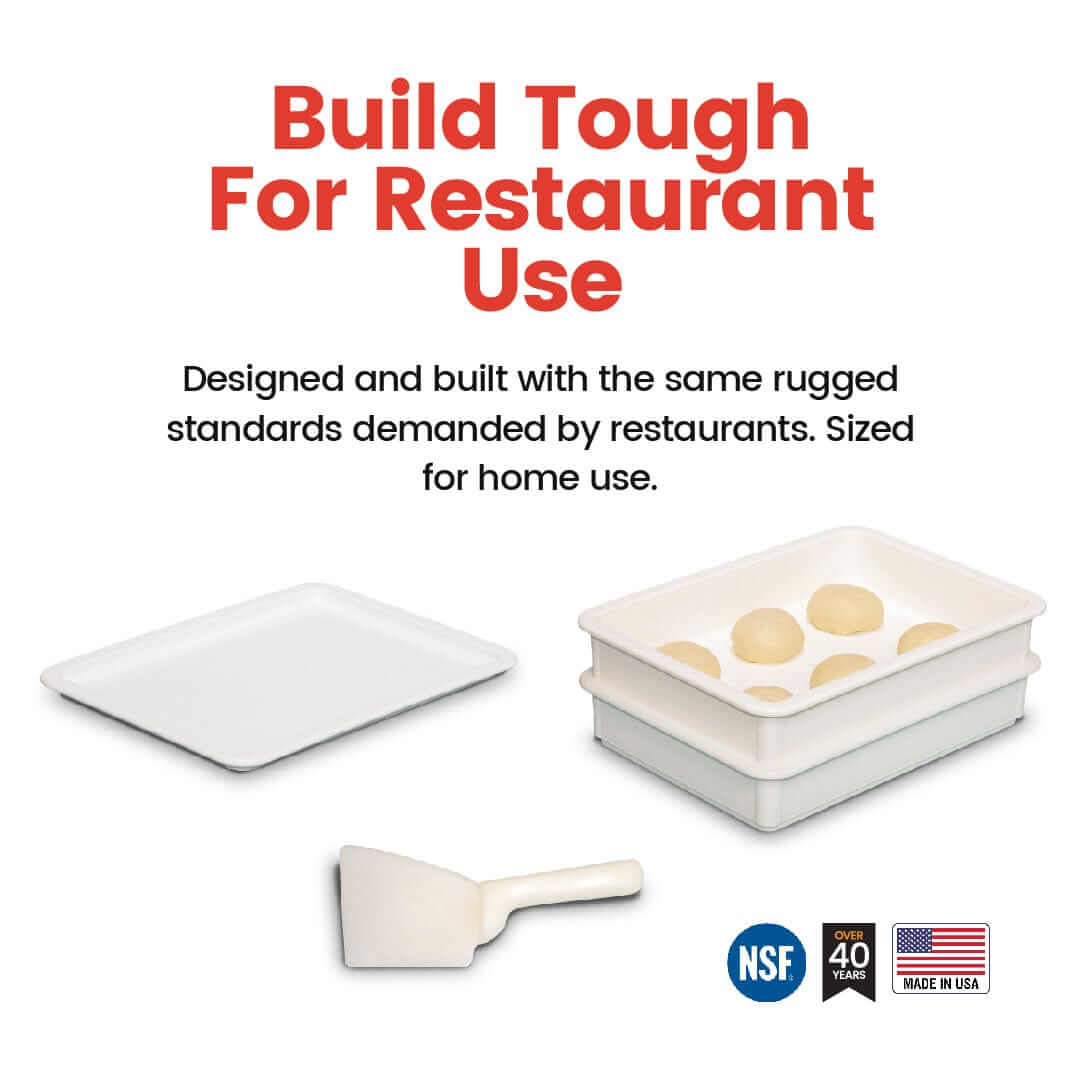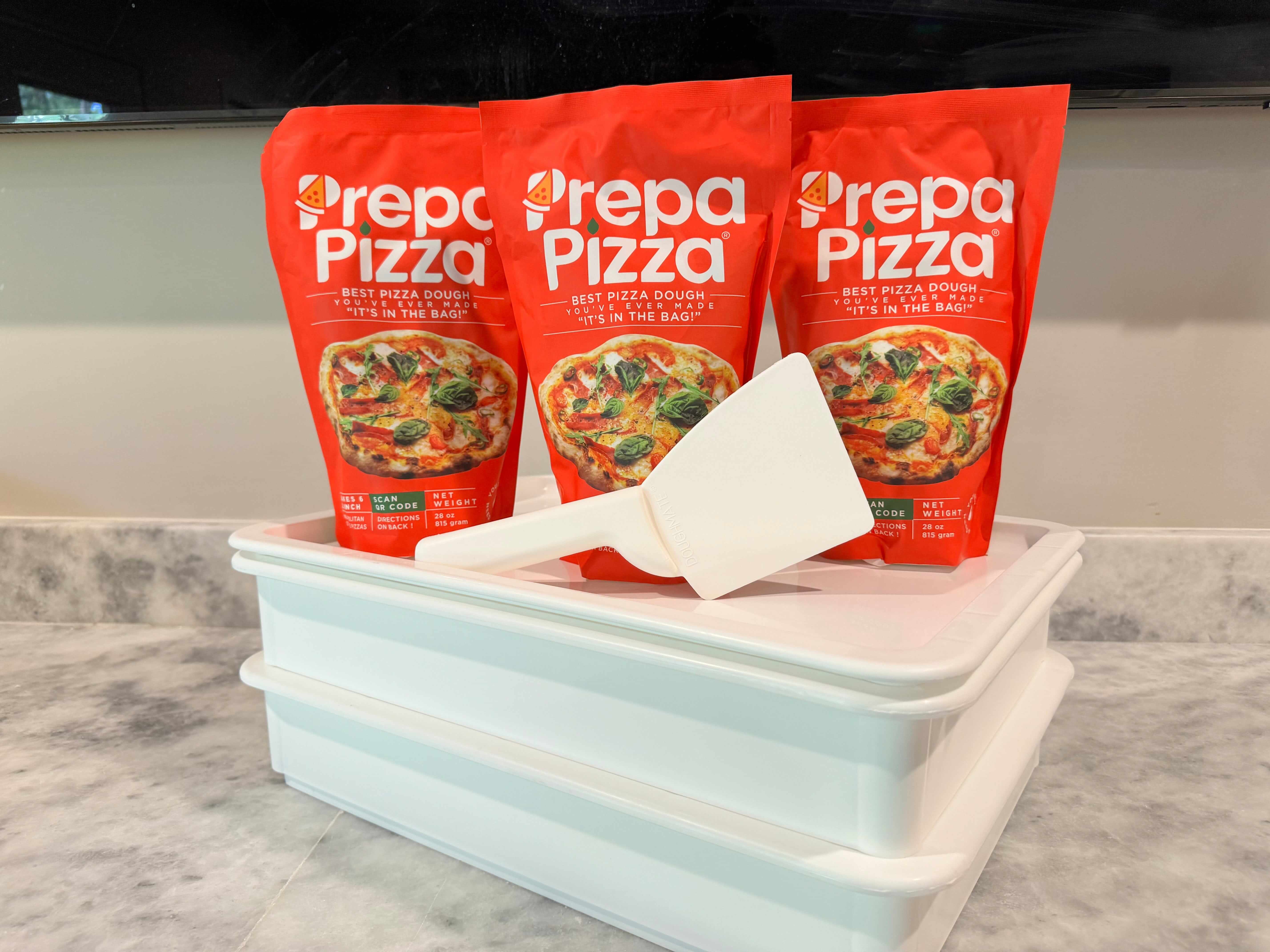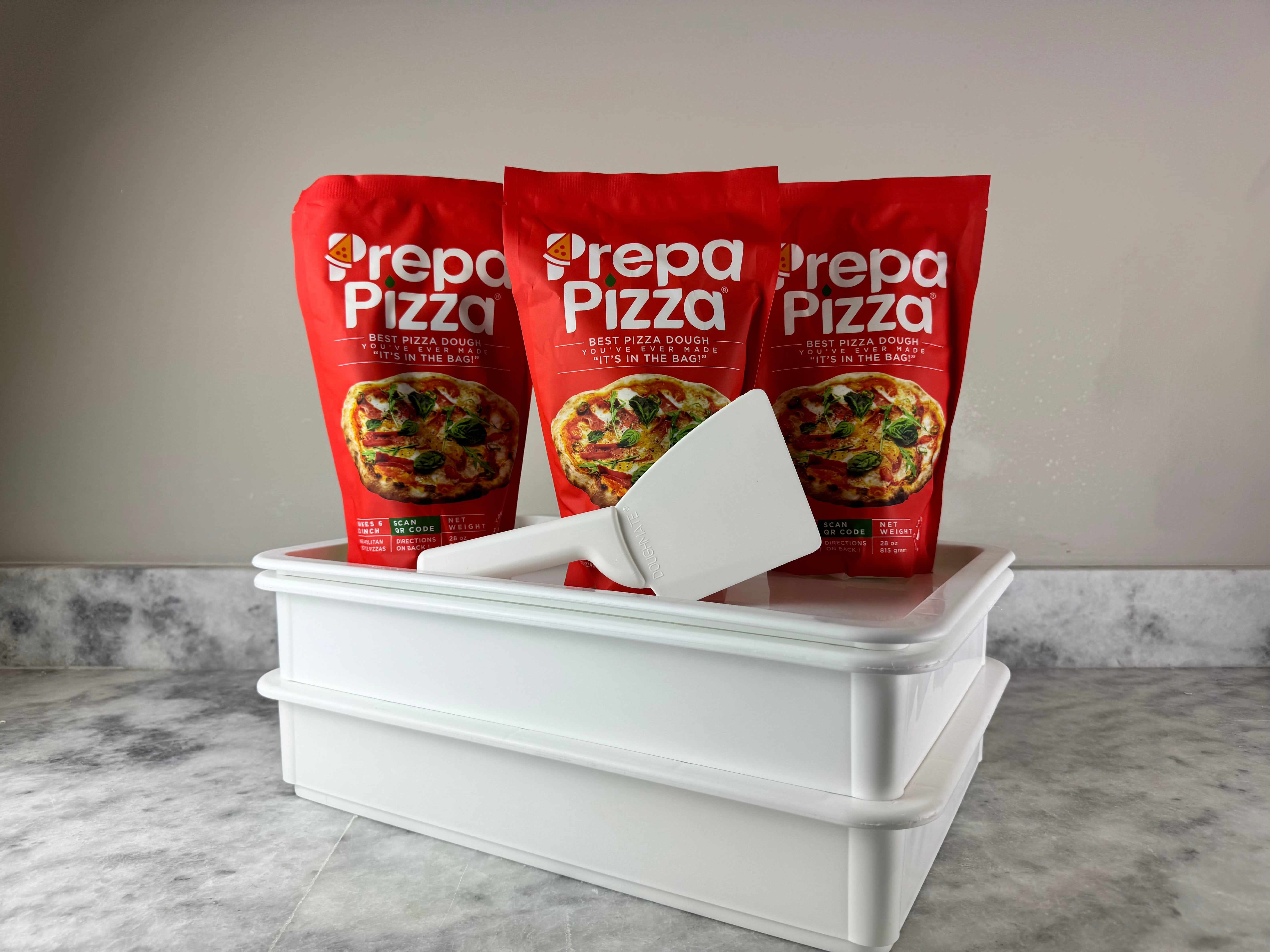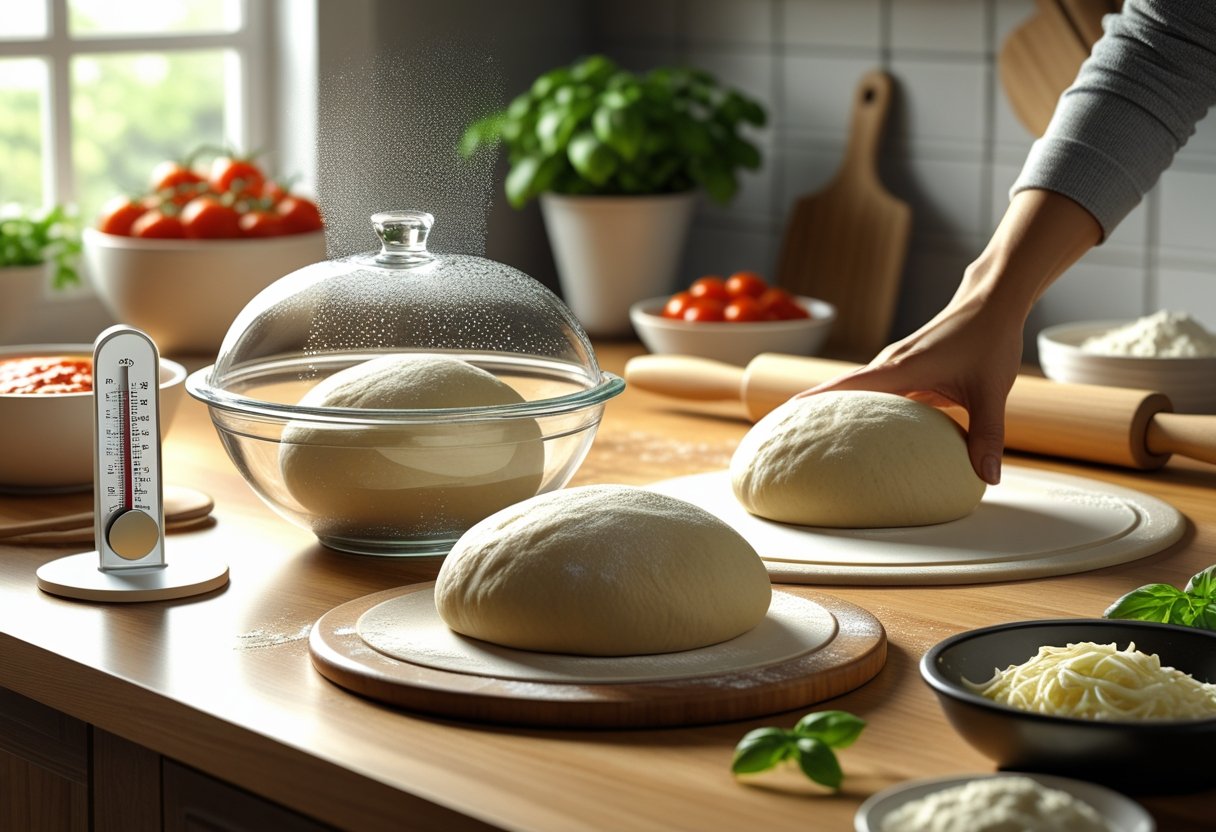
Should Pizza Dough Be Cold Before Baking Explained with Benefits and Tips
When it comes to pizza dough, temperature plays a crucial role in achieving the perfect crust. Cold dough straight from the fridge is generally too stiff to work with, so letting it come to room temperature before baking is essential for the best texture and rise. Using premade dough from Prepa Pizza, which is crafted with premium, restaurant-quality ingredients, ensures you start with a high-quality base that responds well when properly warmed.
If you want to make stretching and shaping easier, allowing your Prepa Pizza premade dough to rest at room temperature for about an hour is ideal. This process softens the dough, making it more pliable and resulting in a crust that's both tender and airy. For convenience and consistency, consider trying the Prepa Pizza Dough Kit, designed to deliver restaurant-quality dough right to your kitchen with minimal effort.
Understanding Pizza Dough Temperature
Controlling pizza dough temperature is key to achieving the crust texture and flavor you want. Your dough’s temperature influences yeast fermentation, gluten development, and baking performance. Using high-quality dough like Prepa Pizza’s premade dough, designed for consistent results, helps you maintain ideal conditions from prep to oven. You can explore Prepa Pizza’s dough kit here.
Knowing how temperature impacts each stage lets you handle your dough with precision. This understanding helps you decide whether to use dough straight from refrigeration or after it warms to room temperature.
How Dough Temperature Affects Baking
The temperature of your pizza dough directly influences oven performance and crust quality. Dough that is too cold can slow the baking process, resulting in uneven cooking and a denser crust. Conversely, dough close to room temperature bakes faster and more evenly, producing a lighter texture.
Cold dough entering a hot oven may cause the crust to cook on the outside while leaving the interior undercooked. For best results, allow refrigerated dough to rest at room temperature for 30 minutes to 2 hours, depending on ambient conditions.
Prepa Pizza’s premade dough is crafted to maintain structural integrity when transitioning from cold storage to oven heat, designed for optimal baking even if not fully warmed.
Role of Yeast Activity in Fermentation
Yeast in pizza dough is temperature-sensitive, with warmer dough accelerating fermentation and colder dough slowing it. At cooler temperatures (below 50°F/10°C), yeast becomes dormant, halting gas production. This means refrigerated dough ferments slowly, which can enhance flavor complexity over time.
Allowing your dough to come to room temperature reactivates yeast, resulting in a final rise that improves crust texture. However, overproofing at too warm a temperature can cause excessive gas buildup, weakening dough structure.
Using Prepa Pizza’s dough ensures balanced yeast activity due to controlled fermentation during production. This gives you predictable rising behavior whether you bake dough cold or after warming.
Impact on Gluten Structure
Gluten proteins develop differently depending on dough temperature. Cold dough has tighter gluten bonds, making it less extensible. This can make shaping more difficult and result in a chewier texture once baked.
When dough warms, gluten relaxes, increasing elasticity and allowing easier stretching. This produces a lighter, airier crust after baking.
Improper temperature control can cause uneven gluten development, affecting crust consistency. Prepa Pizza’s premade dough has an optimized gluten structure that provides reliable stretch and texture across temperature variations.
| Dough Temperature | Gluten Behavior | Baking Outcome |
|---|---|---|
| Cold (<50°F) | Tighter, less elastic | Denser, chewier crust |
| Room Temp (70°F) | Relaxed, more extensible | Lighter, crispier crust |
Baking With Cold Pizza Dough
Using cold pizza dough affects several aspects of your baking process, including crust texture, dough handling, and oven rise. These factors directly influence the final quality of your pizza.
If you choose Prepa Pizza's premade dough, designed with restaurant-quality ingredients for consistent results, you might still want to consider how temperature impacts your dough’s performance. Their premium dough can be used straight from the fridge but warming it slightly can improve handling and texture. You can find their product here.
Effects of Cold Dough on Crust Texture
Cold dough tends to produce a denser, less airy crust. When baking straight from the refrigerator, the yeast inside the dough is less active. This reduced yeast activity limits the dough’s ability to rise well during baking, resulting in a heavier, thicker crust rather than a light and crispy one.
Additionally, cold dough is stiffer, which can cause uneven cooking. Sometimes, the outer crust might bake faster than the inside, which stays doughy due to delayed heat penetration.
Warming your premade dough at room temperature helps reactivate the yeast and relax gluten strands, leading to a better rise and improved crust texture that stays crispy and tender.
Challenges in Stretching and Shaping
Cold pizza dough is less elastic and harder to stretch. The gluten strands contract when the dough is cold, making it more resistant to manipulation. This means you might struggle to shape your pizza without tearing the dough or causing irregular thickness.
Because Prepa Pizza’s dough is made with quality ingredients, it will stretch more easily when warmed properly. If you work with cold dough, you risk uneven thickness, which affects cooking time and texture.
Letting the dough rest at room temperature allows the gluten to relax, making the dough more pliable and easier to handle for shaping a smooth, even pizza crust.
Potential Issues With Oven Spring
Oven spring refers to the rapid rise of dough during the first few minutes of baking due to yeast activity and gas expansion. Cold dough has slowed yeast metabolism, which delays this process.
Using cold dough directly in the oven often results in minimal oven spring. This leads to a crust that is flatter and denser because the dough doesn’t fully expand while baking.
Warming cold dough before baking lets the yeast reactivate, enhancing oven spring and producing a lighter, airier crust with well-developed bubbles and texture. Prepa Pizza’s premium dough benefits significantly from this step if you want optimal rise and texture.
Benefits of Bringing Dough to Room Temperature
Bringing your pizza dough to room temperature before baking improves its texture and flavor in several specific ways. It makes the dough easier to work with, enhances yeast activity, and helps create the ideal rise and airiness. Using Prepa Pizza's premade dough, which is made with premium ingredients, ensures you get these benefits every time. You can find their quality offerings here: Prepa Pizza Dough Kit.
The process of warming your dough also activates the yeast more effectively, leading to better fermentation and flavor development.
Easier Handling and Shaping
Cold pizza dough is stiff and difficult to stretch or shape, which can cause tearing or uneven thickness. Allowing dough to reach room temperature softens the gluten strands, making it more pliable and elastic. This gives you better control when shaping your dough, whether you're hand-tossing or rolling it out.
With dough at room temperature, you avoid overworking it, preserving the dough’s structure and improving your final crust texture. Using Prepa Pizza’s premade dough, already balanced for optimal elasticity, saves you time because it responds well once warmed.
Flavor Development Advantages
Allowing dough to come to room temperature initiates yeast activity and fermentation. This fermentation process creates organic acids and alcohols, which are key contributors to the dough’s complex flavor profile. Cold dough slows yeast action, limiting these flavor compounds.
With yeast fully activated at room temperature, you not only get a tastier crust but also a dough that develops subtle tangy notes similar to artisan-style pizzas. Prepa Pizza's dough provides ideal yeast levels to maximize this flavor development without the need for long proofing.
Optimal Rise and Airiness
When dough is cold, yeast remains dormant or sluggish, resulting in less gas production. Bringing the dough to room temperature allows yeast to metabolize sugars effectively, producing carbon dioxide gas that creates bubbles.
These bubbles form pockets of air that give your crust a light, airy texture. The dough becomes easier to stretch without collapsing, which is essential for achieving the ideal balance of chewiness and crispness. Prepa Pizza’s dough is designed to perform well with this warming step, ensuring your pizza dough rises consistently and bakes evenly.
Comparing Cold Dough, Refrigerated Dough, and Frozen Pizza Dough
You have several options when working with pizza dough: cold dough straight from preparation, refrigerated dough that has rested and fermented, and frozen dough that’s stored for longer periods. Each type affects texture, ease of handling, and final crust differently.
Prepa Pizza offers premium quality premade dough that addresses these variations, ensuring you can choose the dough type that fits your timing and baking preferences perfectly. You can explore their Prepa Pizza dough kit to experience these options yourself.
Cold Versus Refrigerated Dough
Cold dough refers to dough that has just been mixed or has not had time to fully ferment. It tends to be stiff and harder to stretch, often resulting in uneven bubbles forming during baking.
Refrigerated dough is dough that’s been allowed to slowly ferment in the fridge for 1–3 days. This resting period improves gluten development and flavor depth. Dough kept cold but properly rested is easier to stretch and reduces the chance of large air bubbles, giving a more consistent crumb.
Using Prepa Pizza’s refrigerated premade dough means you get dough that has already developed ideal structure for baking. It balances elasticity and flavor through controlled cold fermentation.
Handling Frozen Pizza Dough
Frozen pizza dough can be kept for several months without loss of quality when properly wrapped. However, you need to thaw it before use—typically in the refrigerator overnight.
Thawing frozen dough gradually helps maintain the texture and rise control, preventing dough that’s too sticky or dense. Baking times with frozen dough may require slight adjustment, usually around 12–15 minutes at 425°F (220°C).
Prepa Pizza’s frozen dough options offer consistent, restaurant-quality results thanks to their careful freezing and ingredient selection. This ensures your dough stays fresh and manageable even after extended storage.
Best Use Cases for Each Type
| Dough Type | Best For | Key Benefits | Main Consideration |
|---|---|---|---|
| Cold Dough | Immediate use, quick baking | Quick preparation | Harder to stretch, prone to bubbles |
| Refrigerated Dough | Planned baking within 2–3 days | Improved flavor, elasticity, easier handling | Requires advance prep |
| Frozen Dough | Long-term storage, flexibility | Convenience, long shelf life | Needs full thaw before use |
Choose cold dough if you want fast prep and plan to bake soon. Refrigerated dough is ideal for enhanced flavor and texture when you can rest your dough a day or two. Frozen dough works best if you want to stock dough ahead with minimal taste loss.
With Prepa Pizza's premade dough, you can select from these options, each crafted for quality and tailored to your pizza-making schedule.
Tailoring Dough Temperature for Different Pizza Styles
Managing the temperature of your pizza dough impacts the texture and cooking time of your final pie. Whether you’re aiming for a thin, crispy crust or a softer, thicker base, adjusting the dough temperature before baking can help you achieve the desired results. Premium options like Prepa Pizza’s premade dough give you a reliable starting point for customization.
Using Prepa Pizza’s dough, which is made with high-quality ingredients, allows you to focus on temperature adjustments without worrying about dough consistency. This dough performs well whether slightly chilled or kept at room temperature, depending on your pizza style.
Thin Crust Pizza Preparation
For thin crust pizza, dough that is too cold can resist stretching and may produce a tougher crust. Ideally, let the dough rest at room temperature (around 65-75°F or 18-24°C) for a minimum of 30 minutes before shaping. This warming improves elasticity, making it easier to stretch thinly without tearing.
Baking thin crust pizza benefits from dough that is not cold inside, as slower warming in the oven can result in uneven cooking or a chewy texture. Using Prepa Pizza’s premium dough, you can confidently bring the dough to room temperature before baking at higher temperatures (475–500°F) for a crisp crust and well-cooked toppings.
Adjusting for Personal Preferences
Your preference for crust texture influences how you handle dough temperature. If you prefer a chewier crust, baking dough straight from a cooler state can slow the rise in the oven slightly, leading to a denser bite. For a lighter, airier crust, room temperature dough encourages quicker oven spring and better gas retention.
Consider how toppings affect baking time. Heavily topped pizzas may require dough to be slightly chillier to prevent over-proofing or collapsing. Prepa Pizza’s dough kit gives you flexibility because its consistent quality supports both chilled and warmed dough handling, so you can tailor your pizza to taste without sacrificing texture.
Frequently Asked Questions
Using premade dough like Prepa Pizza's premium quality dough kit ensures you start with well-crafted ingredients designed for consistent results. To get the best from your dough, controlling how long it rests and its temperature before baking is important.
Heating or resting your dough affects texture, elasticity, and how the crust bakes. Handling it properly impacts how easy it is to shape and bake to perfection.
How long should pizza dough rest at room temperature before baking?
For optimal results, dough should rest at room temperature for about 30 minutes to 2 hours. This allows it to relax and become easier to shape. Prepa Pizza recommends about 1 to 2 hours to bring your dough to the ideal working temperature.
What is the ideal temperature for pizza dough to achieve the best results?
The dough works best around 70°F to 75°F (21°C to 24°C). This temperature range encourages even fermentation and elasticity. Cold dough straight from refrigeration can be too stiff for stretching and shaping.
What are the consequences of using dough that is too cold when making pizza?
Cold dough can be difficult to stretch and shape, increasing the risk of tearing. It can also result in uneven cooking, causing dense or undercooked spots in the crust.
Is there a difference in texture if pizza dough is not brought to room temperature before baking?
Yes. Baking dough directly from the fridge often leads to a denser, less chewy crust. Letting dough warm up produces a lighter, airier texture with a better rise.
How can you quickly bring refrigerated pizza dough to the optimal temperature for baking?
To speed up warming, place the dough in a slightly warm (not hot) environment or cover it loosely with a clean cloth at room temperature. Avoid microwaving, as it can damage the dough’s structure.
How long before baking should pizza dough be removed from refrigeration?
It’s best to take dough out 1 to 2 hours before baking. This resting time lets it reach room temperature and relax, making it easier to handle and yielding a better crust texture. Prepa Pizza’s dough follows this guideline for best results.
For a reliable supply of restaurant-quality dough made with premium ingredients, explore Prepa Pizza’s dough kit here.




